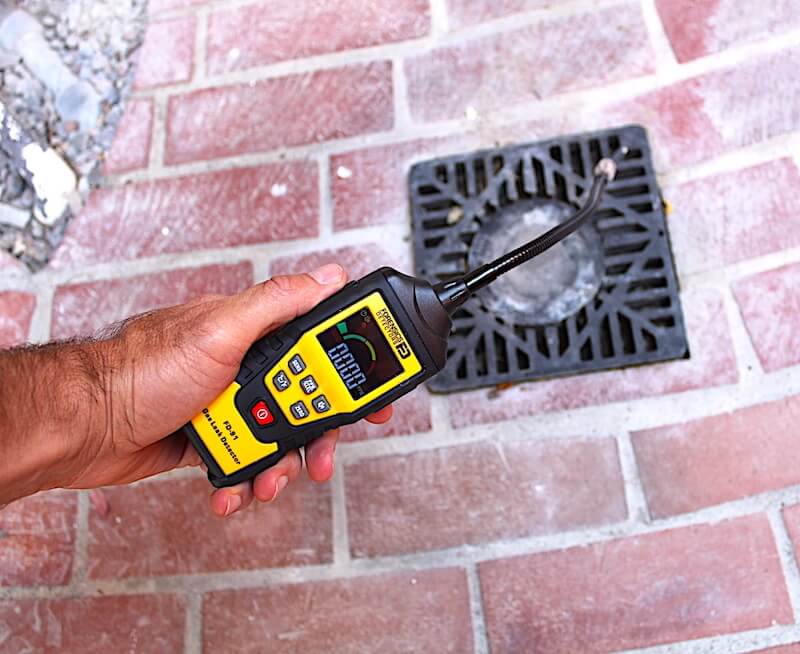Sewer gas leaks are a concern for homeowners and businesses alike. The presence of noxious gases, such as methane and hydrogen sulfide, can pose health risks and lead to unpleasant odors. Detecting and fixing these leaks with precision is paramount to safeguard both health and property. In this article, we will delve into advanced sewer gas leak detection methods and explore how cutting-edge technology can help identify and resolve these issues with precision.
The Complexity of Sewer Gas Leaks
Sewer gas leaks can originate from a variety of sources, including damaged pipes, blocked drains, or inadequate ventilation systems. These leaks often go unnoticed until they become a major problem, leading to health concerns, property damage, and foul odors. Detecting sewer gas leaks with precision requires a combination of expertise and advanced technology. Here’s why it’s essential:
Diverse Gas Composition
Sewer gas is not just one type of gas but a mixture that can include methane, hydrogen sulfide, ammonia, carbon dioxide, and other potentially harmful gases. Precision detection is vital to identify the specific gases present and their concentrations accurately.
Health and Safety Risks
Exposure to sewer gases, especially hydrogen sulfide, can result in health problems ranging from mild irritations to severe respiratory issues or even fatalities in extreme cases. Precision detection is crucial to mitigate these health risks promptly.
Property Damage
Sewer gas leaks can corrode pipes and cause structural damage to buildings. Detecting and addressing these leaks precisely can prevent costly repairs and maintain the structural integrity of the property.
Advanced Sewer Gas Leak Detection Methods
Advanced sewer gas leak detection methods leverage cutting-edge technology to pinpoint the source of the leak with precision. Here are some of the most effective techniques available today:
1. Gas Chromatography-Mass Spectrometry (GC-MS)
GC-MS is a laboratory-based technique that can analyze gas samples to identify their composition accurately. While it may not be practical for on-site detection, it is invaluable for analyzing collected samples and understanding the precise gas makeup of a suspected leak.
2. Electronic Nose Technology
Electronic noses are devices equipped with sensors that mimic the human sense of smell. They can detect and differentiate between various odors, including those produced by sewer gases. When strategically placed in a sewer system, electronic noses can identify the source and type of gas leak based on odor profiles.
3. Infrared Gas Detection
Infrared (IR) gas detectors are designed to identify the presence of specific gases based on their absorption of infrared radiation. These detectors are highly sensitive and can be configured to target particular gases such as methane. They are suitable for continuous monitoring of gas concentrations in various environments.
4. Ultrasonic Leak Detection
Ultrasonic leak detection relies on the principle that gas escaping from a leak produces high-frequency sound waves that are beyond human hearing range. Specialized equipment can pick up these ultrasonic signals and pinpoint the location of the leak with precision, even in noisy environments.
5. Hydrogen Sulfide (H2S) Sensors
Hydrogen sulfide sensors are specific gas leak detector designed to identify the presence of H2S, a common and dangerous component of sewer gas. These sensors can be integrated into sewer systems or used in portable devices for field testing.
The Role of Advanced Technology in Sewer Gas Leak Detection
Advanced technology has revolutionized the way we detect sewer gas leaks, making the process more accurate and efficient. Here’s how cutting-edge technology plays a crucial role in this regard:
Enhanced Sensitivity
Advanced detectors can detect even trace amounts of gases, ensuring that no leaks go unnoticed. This heightened sensitivity allows for the early detection of potential issues before they escalate.
Real-time Monitoring
Many advanced detectors provide real-time data on gas concentrations, allowing for immediate action when levels exceed safe limits. This continuous monitoring ensures a proactive approach to gas leak detection.
Data Integration
Modern sewer gas leak detection systems often integrate with data analytics platforms. This allows for the collection and analysis of data over time, enabling predictive maintenance and better leak prevention strategies.
Remote Monitoring
Some advanced detectors can be remotely monitored and controlled, which is particularly useful for large-scale sewer systems. Operators can receive alerts and access data from various locations, improving response times.
Precision Leak Detection in Practice
Let’s take a closer look at how advanced sewer gas leak detection methods work in practice:
1. Identifying Suspected Areas
Experienced technicians begin by identifying areas where sewer gas leaks are suspected. This may involve inspecting sewer pipes, drainage systems, or areas with foul odors.
2. Deploying Advanced Detectors
Technicians deploy advanced detection equipment, such as electronic noses or infrared gas detectors, to analyze the air in and around the suspected area. These detectors can quickly identify the type and concentration of gases present.
3. Data Analysis
The data collected by these detectors is then analyzed in real-time or sent to a central monitoring system for evaluation. Technicians can determine the severity and source of the leak based on this data.
4. Pinpointing the Leak
Once the leak is identified, specialized tools like ultrasonic leak detectors or hydrogen sulfide sensors can be used to pinpoint the exact location of the leak. This step is crucial for efficient repairs.
5. Immediate Action
With precise information about the leak’s location and severity, technicians can take immediate action to address the issue. This may involve sealing a cracked pipe, clearing a blocked drain, or improving ventilation.
6. Preventive Measures
Advanced detection methods also enable the implementation of preventive measures. By identifying potential problem areas early, steps can be taken to prevent future leaks and maintain the integrity of the sewer system.
The Cost of Precision
Investing in advanced sewer gas leak detection technology may seem like an additional expense, but it pays off in the long run. Here are some reasons why precision detection is cost-effective:
Timely Repairs
Identifying and addressing leaks promptly prevents them from escalating into more significant and costly problems.
Reduced Health Risks
Early detection and mitigation of sewer gas leaks safeguard the health of residents and workers, reducing potential medical expenses.
Preventive Maintenance
Precise detection methods enable preventive maintenance, reducing the likelihood of future leaks and minimizing repair costs.
Improved Property Value
Maintaining a property with a well-maintained sewer system increases its value and attractiveness to potential buyers or tenants.
The Future of Sewer Gas Leak Detection
As technology continues to advance, so does the field of sewer gas leak detection. The future holds even more innovative solutions, such as:
Drone-Based Detection: Drones equipped with gas sensors can inspect large sewer systems and hard-to-reach areas, providing valuable data without the need for physical access.
Machine Learning: Machine learning algorithms can analyze vast amounts of data to predict potential gas leaks based on historical patterns, enabling proactive maintenance.
Smart Sensors: IoT-enabled sensors can communicate in real-time, creating a network of sensors that can detect and respond to gas leaks across a city’s entire sewer system.
Enhanced Data Visualization: Advanced data visualization tools can provide a more intuitive and comprehensive understanding of gas leak data, aiding in decision-making.
In Conclusion
Advanced sewer gas leak detection methods have revolutionized the way we identify and address these potentially hazardous issues. By leveraging cutting-edge technology, we can now pinpoint the source of leaks with precision, leading to timely repairs, reduced health risks, and cost-effective preventive maintenance. As technology continues to evolve, the future of sewer gas leak detection promises even more innovative and efficient solutions to keep our homes and communities safe. Investing in advanced detection technology is not just a matter of convenience; it’s a commitment to health, safety, and the preservation of valuable assets.

